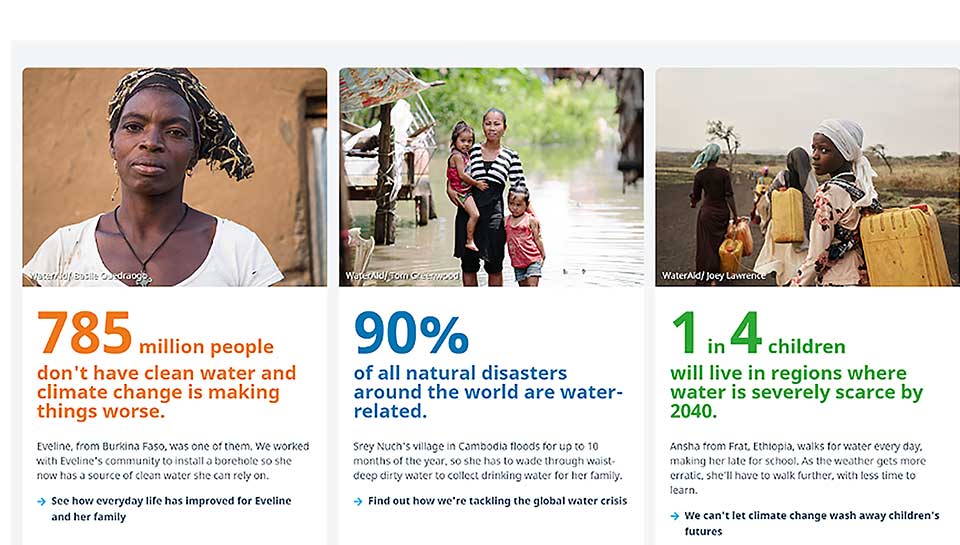By Elliot Mark
It’s a crucial part of operating any business that you understand your target audience. They’re the people that will keep coming back, offering avenues for free promotion and reassurance your products and services are appealing.
Sometimes though, you need to prove you actually understand your target audience and what they want. And that can be hard for lots of businesses to do.
Why is this important? Displaying a concrete understanding of your target audience:
- Tells potential investors you’re well-informed and self-aware
- Tells potential customers you care about and work to please your existing base
This makes your business a much more attractive proposition. Building communities and having the confidence to brag about your brand is all the rage now. So, let’s explore how your brand can show it understands its target audience.
Incorporate this understanding into your website design
Websites are like modern storefronts for digital businesses. If your website can’t put people at ease and convince them to come in like a traditional store window, you don’t have a hope of building a strong community around your brand.
Your website needs to be the home of everything about your business, including public displays of brand and audience awareness.
Not all websites fulfill the same role. Some are stores, others are just gateways directing users to customer service lines. But they all need to get this sense of understanding across, whether it’s through an intuitive design or content.
Design is an underrated and subtle way of showing you understand and appreciate your audience. A website looking to cater to colorblind users, for example, would want to avoid using color as a means of navigation. It’s simple, but it also shows a sense of awareness about your users that they will value.
Most typically, this understanding comes through content. Nonprofit and community group brands have mastered this, using images, blogs, and data on their website to not just get across their mission statement, but make the pitch they’re the most informed for the job.
Veteran compensation consultants Vet Comp & Pen do this by assuring users of their unique understanding of the veteran market and their policy of hiring veterans into leading roles. Water Aid uses data to put across the impact they’ve already had and funnel users towards donations, showing they understand their triggers. UK charity Breast Cancer Care puts information front and center of their website, demonstrating they know patients and concerned people are liked to land on their website nine times out of ten.
 Image Water Aid
Image Water Aid
Whether it’s overt or subtle, website design and content are key functions of displaying audience understanding.
Create content your audience wants to see
Content is the lifeblood of the internet, empowering brands on search engines and giving online audiences a reason to keep coming back.
Additionally, content can be a brilliant avenue for displaying a strong understanding of your target audience. This can be done in a number of ways, such as publishing content they want to see or use them as inspiration.
Don’t assume, ask! Let your audience guide your content through polls and surveys. Ask whether they want to see more blogs or if they think you should give video content a try. Did they enjoy the Facebook Livestream or would they prefer to chat through Twitch? This feedback can help inform the form and flavor of your content, with the results telling your target audience you’re always listening and understand what they want to see.
Also known as ‘social listening’, this technique has been mastered by fast-food brands such as Arby’s, which made audience feedback a central part of their Saucepocalypse campaign. Just one of many examples of the chain’s unique approach to social media and content creation, Arby’s noticed increased customer irritation when their classic sauce was running out and encouraged their audience to send in ‘nightmare’ tales of dry, flavourless food. This content was then used to create classic horror movie-inspired posters promoting the release of bottled versions of their signature sauces.
What does this tell audiences? Not just that their concerns are being heard, but that they’re valuable to the company. These concerns aren’t just vital feedback, but fuel for creative ideas. Audiences can see this as both an apology and a fun ad campaign. It’s a great way to turn a frown into a smile with just one campaign.
 Image Ads of the World
Image Ads of the World
Don’t insult their intelligence
Customers are smart. Not only do they know what they want, but they know where else they can get it.
The modern shopper doesn’t go to a particular brand because they’re the only game in town. They have a certain loyalty to them and an interest in seeing the brand succeed. Look at how fashion brands have ascended to cult-like status in recent years. However, if customers feel like their intelligence is being insulted and loyalty is taken for granted, they’ll go elsewhere.
Don’t treat your audience like they’re stupid. Be clear about your relationship and honest when you’re looking for market research. Don’t dress up less than exciting emails with a drab poll as absolute must-reads that will change their lives. It dilutes future messages. When there is something to shout about, give them a reason to get excited.
Most of all, don’t promise what you can’t deliver (and know you can’t deliver). This will break the bond you have with your target audience and suggest you never really knew them at all. It looks bad on you and your future prospects as a brand. These are the customers you’re supposed to know inside out and be able to retain forever.
Use of social media more naturally
If you spend a lot of time on social media you might have noticed a change in how business accounts interact with their audience.
While in the early days of social media, brand accounts on Twitter, Instagram and Facebook would play things pretty professionally and essentially act as another form of a press release, some companies have taken it upon themselves to adopt the language of social media, becoming less afraid of making jokes or joining in on the big ‘meme’ of the week.
If you have a younger or more social media savvy audience, this is a great way to connect with them. Not only does it increase engagement on the platform, but develop brand loyalty and a sense there are real people behind your business. Make jokes, have more casual conversations and encourage a community to blossom on your pages.
It’s also important to consider this logic on issues of social justice. Many brands found success in the summer of 2020 by making their voices heard about the Black Lives Matter movement or talking candidly about the impact of COVID-19. Many audiences want to see a response from their favorite brands, with younger consumers seeing it as an important factor in their decision-making.
How to identify your target audience
Starting to question whether you have the right target audience? Here are some ways you can identify just who you should be targeting with your content and advertising:
Conduct modern market research
An obvious answer, but better market research will give you a more informed view of your base. Some great ways to approach modern market research include:
- Live chat focus groups
- Online and email surveys
- Heat maps and A/B tests
- Social media listening
- Eye-tracking studies
These methods will give you a better understanding of what customers want from your brand and how they currently interact with your website and other digital platforms.
This will help get across the pain points and issues with your brand, website, and customer service, which you can later refine based on feedback.
Don’t try and reach too far
Finally, know your limits!
There’s only so far any brand can go in this day and age. You’re not going to become the next Coke or Apple overnight. Start slow and build loyalty within your customer base, rather than trying to capture too wide a net.
If you try and please everyone you’ll end up with muddled products and services backed by muddled promotion nobody enjoys.
It’s harder than you might think to show you understand your audience.
One of the worst ways to do it is to come out and announce you understand your audience. So you have to be more subtle and find ways to build an interactive and creative community around your brand. It’ll take time, but there are lots of great examples to learn from out there.
Elliot Mark is a self-taught ecommerce entrepreneur at Ecommerce Platforms, with a particular passion for content and branding. When he’s not trawling for the latest ecommerce news and trends, you can find him cooking up something tasty, shooting pool, or deep in a good book. Share your book recommendations with him @EcomPlatformsio.

